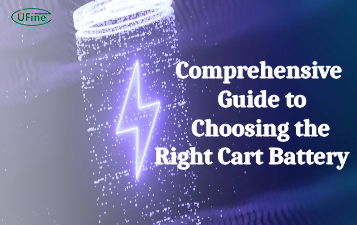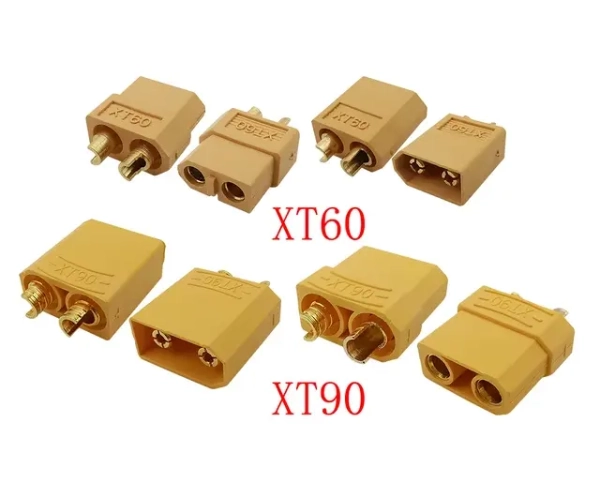Battery connectors link batteries and their power devices, ensuring a stable and reliable connection. When choosing a suitable battery connector, it’s essential to consider factors such as compatibility, current-carrying capacity, and durability. This article will compare two popular battery connectors: XT60 and XT90. We will explore their features, pros, and cons and provide insights into their applications.
Part 1. What are battery connectors?
Battery connectors are electrical components that establish a secure and efficient connection between a battery and an electronic device. They come in various shapes, sizes, and designs to accommodate different applications. The primary purpose of a battery connector is to ensure a reliable flow of electrical current between the battery and the device, minimizing power loss and potential damage.
Importance of choosing the suitable battery connector
Selecting a suitable battery connector is crucial for several reasons.
- Firstly, it ensures compatibility between the battery and the device, preventing compatibility issues that could lead to malfunction or damage.
- Secondly, the exemplary connector should be able to handle the electrical current required by the device without overheating or causing voltage drops.
- Finally, a durable and reliable connector reduces the risk of connection failures, which can lead to power interruptions or even safety hazards.
Part 2. XT60 Battery connector
The XT60 battery connector is popular among hobbyists, drone enthusiasts, and RC (radio-controlled) vehicle enthusiasts. It features a cylindrical design with male and female connectors that securely lock into place, providing a solid connection. The XT60 connector is known for its ease of use, reliability, and wide availability in the market.
Features
- Secure Connection: The XT60 connector utilizes a robust locking mechanism that ensures a secure connection, minimizing the risk of accidental disconnections during operation.
- High Current Capacity: It can handle high current loads, making it suitable for applications requiring substantial power output. With a continuous current rating of around 60-75 amps, the XT60 connector can safely handle significant power demands.
- Heat Resistance: The XT60 connector reliably handles high temperatures without melting or degrading, ensuring performance in demanding conditions.
- Ease of Use: The connectors are easy to plug and unplug, providing convenience during setup and maintenance.
Pros
- Wide Availability: XT60 connectors are readily available, making them easily accessible for hobbyists and professionals.
- Compatibility: They are compatible with various devices, including RC cars, drones, and other high-power applications.
- Reliability: The XT60 connector’s solid construction and secure locking mechanism result in a reliable connection that minimizes the risk of power interruptions.
Cons
- Size: The XT60 connector is more significant than other battery connectors, which may limit its usability in compact devices or tight spaces.
- Limited Current Capacity: While the XT60 connector can handle high current loads, it may only be suitable for moderately power-hungry applications that require even higher current ratings.
Part 3. XT90 Battery connector
The XT90 battery connector is a robust, heavy-duty connector widely used in applications demanding high power output. You can commonly find it in electric vehicles, high-performance drones, and industrial equipment where reliability and durability are paramount.
Features
- Heavy-Duty Design: The XT90 connector features a rugged and durable design, capable of withstanding high mechanical stress and vibrations.
- High Current Handling: Its design allows it to handle even higher current loads than the XT60 connector, making it ideal for power-hungry applications. With a continuous current rating of around 90-120 amps, the XT90 connector can reliably handle substantial power demands.
- Low Resistance: The XT90 connector has low electrical resistance, minimizing power loss and voltage drops during operation.
- Anti-Spark Design: Some XT90 connectors feature an anti-spark design, reducing the risk of sparks or arcing during the connection process.
Pros
- High-Power Applications: The XT90 connector excels in high-power output applications, such as electric vehicles and heavy-duty industrial equipment.
- Durability: Its robust construction ensures long-term durability, withstanding harsh environments and heavy usage.
- Low Resistance: The low resistance of the XT90 connector allows for efficient power transmission, minimizing energy loss.
Cons
- Size and Weight: The XT90 connector is larger and heavier than the XT60 connector, which can be a disadvantage in applications where space and weight are critical.
- Availability: Compared to the XT60 connector, the availability of XT90 connectors may be more limited, making them slightly more challenging to find in some regions.
Part 4. Comparison between XT60 and XT90 connectors
Here is a comparison between the XT60 and XT90 connectors to help you understand their differences:
1. Size
The XT60 connector is smaller and lighter than the XT90 connector, making it more suitable for compact devices or applications with limited space constraints. On the other hand, the XT90 connector’s larger size and weight make it better suited for applications where robustness and high power handling are essential.
2. Current Capacity
While both connectors can handle high current loads, the XT90 connector has a higher continuous current rating of around 90-120 amps, surpassing the XT60 connector’s 60-75 amps rating. This makes the XT90 connector more suitable for higher power output applications.
3. Availability
You can easily find XT60 connectors in the market as they are widely available from various sources. However, XT90 connectors may be less standard and require more effort, especially in certain regions.
4. Compatibility
Both connectors are compatible with various devices and applications, including RC vehicles, drones, and other high-power electronics. However, it is essential to ensure the connector’s compatibility with the specific device and its power requirements.
5. Durability
Both connectors offer durability and reliability as part of their design. However, the XT90 connector’s heavy-duty design and construction make it more resilient to mechanical stress, vibrations, and harsh environmental conditions.
6. Resistance
The XT90 connector exhibits lower electrical resistance than the XT60 connector, reducing power loss and voltage drops during operation. This makes the XT90 connector more efficient in power transmission.
7. Locking Mechanism
Both connectors feature a secure locking mechanism that ensures a stable connection. The XT60 connector’s locking mechanism is generally more accessible and user-friendly.
8. Price
The XT60 connector is generally more affordable and budget-friendly than the XT90 connector, which may be pricier due to its heavy-duty design and higher current handling capabilities.
Part 5. XT60 and XT90 battery connector applications
XT60 Battery Connector Applications
- RC (radio-controlled) vehicles, including cars, boats, and airplanes
- Drones and quadcopters
- Robotics projects
- Electric skateboards and scooters
- Portable power banks and chargers
XT90 Battery Connector Applications
- Electric vehicles, including electric cars, scooters, and bikes
- Industrial equipment and machinery
- High-performance drones and aerial photography platforms
- Renewable energy systems, such as solar power installations
- Power distribution systems and battery banks
Part 6. Final thoughts
In a nutshell, when it comes to picking between the XT60 and XT90 connectors, it all boils down to your specific needs. If you’re into hobbies or RC devices, the XT60 is widely available and user-friendly. However, the rugged XT90 is the way to go if you’re dealing with high-power applications. Just consider your requirements and make the choice that suits you best.
Related Tags:
More Articles

Comprehensive Guide to Choosing the Right Cart Battery
Choosing the right cart battery ensures optimal performance and longevity. This guide covers cart battery types and helps you make an informed choice.
The Ultimate Guide to 18650 Button Top Battery
18650 button top batteries are popular for their high energy density and reliability. This guide covers their key features, usage, and maintenance tips.
The Power of Slim: Unveiling the Potential of Flat Lithium Ion Battery
Flat lithium-ion batteries power devices from phones to vehicles. This article explores their design, benefits, types, applications, charging, and safety.
The Comprehensive Guide to Battery Balancing and Battery Balancer
Battery balancing and balancers optimize performance, longevity, and safety. This guide covers techniques and tips for choosing the right balancer.
10 Key Facts About Drone Battery for 2024
Uncover crucial insights with "10 Key Facts About Drone Battery for 2024." Learn the latest trends and essential details on drone batteries.




